Mastering Pickleball Singles Strategies for Dominating the Court Solo
Imagine stepping onto a pickleball court, paddle in hand, with only one goal: to outplay your opponent in a strategic duel of singles pickleball. In this game, it’s not just about how hard you hit the ball, but how you play the field and manage your energy. Mastering pickleball singles strategies is more than learning a set of techniques; it’s about transforming into a tactical genius, one shot at a time.
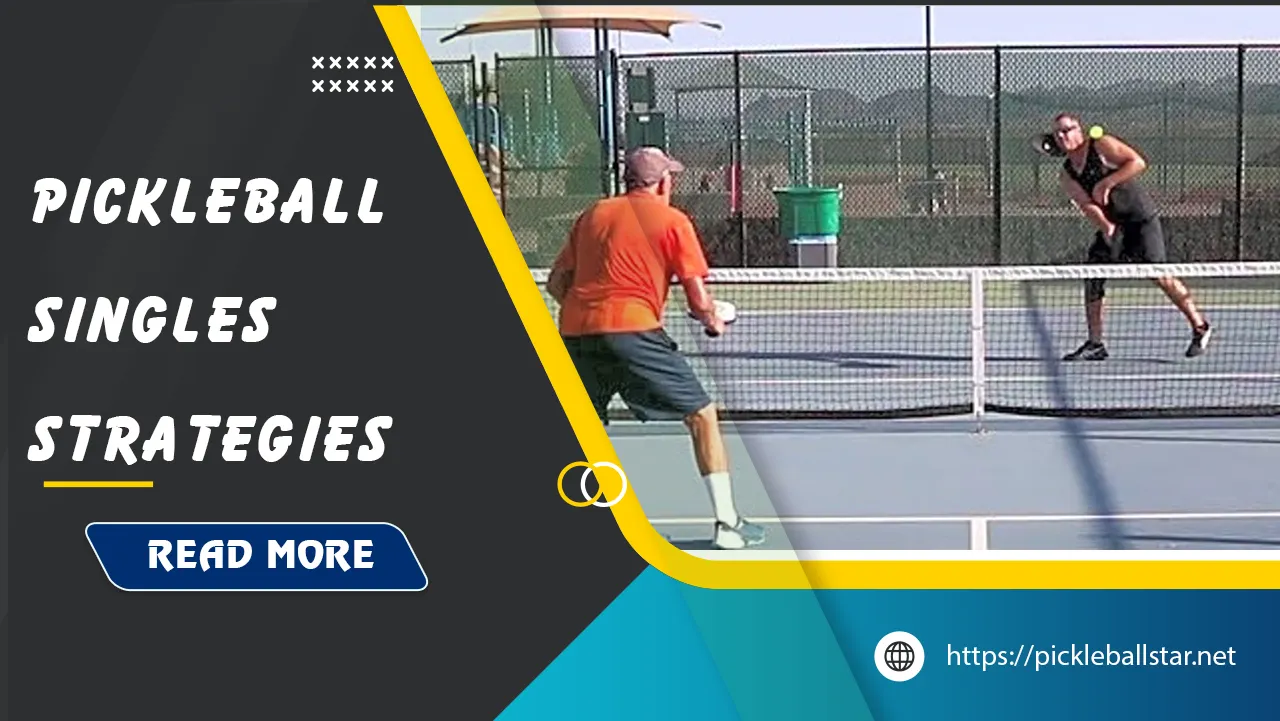
In this deep dive, we explore the nuanced strategies that can elevate your game from average to unbeatable. Whether you’re a seasoned player aiming to refine your approach or a newcomer eager to make your mark, understanding the core principles of singles pickleball will give you a competitive edge. Here, you’ll unlock the secrets to positioning, pickleball shot selection, and psychological warfare on the court, setting you up not just to play, but to outsmart and outlast. Join us as we dissect what it takes to dominate the game, one strategic move at a time.
The Kitchen Zone: The Singles Player’s Battleground
Singles play in pickleball brings a different dynamic to the kitchen zone, a critical area on the court where points are won or lost.
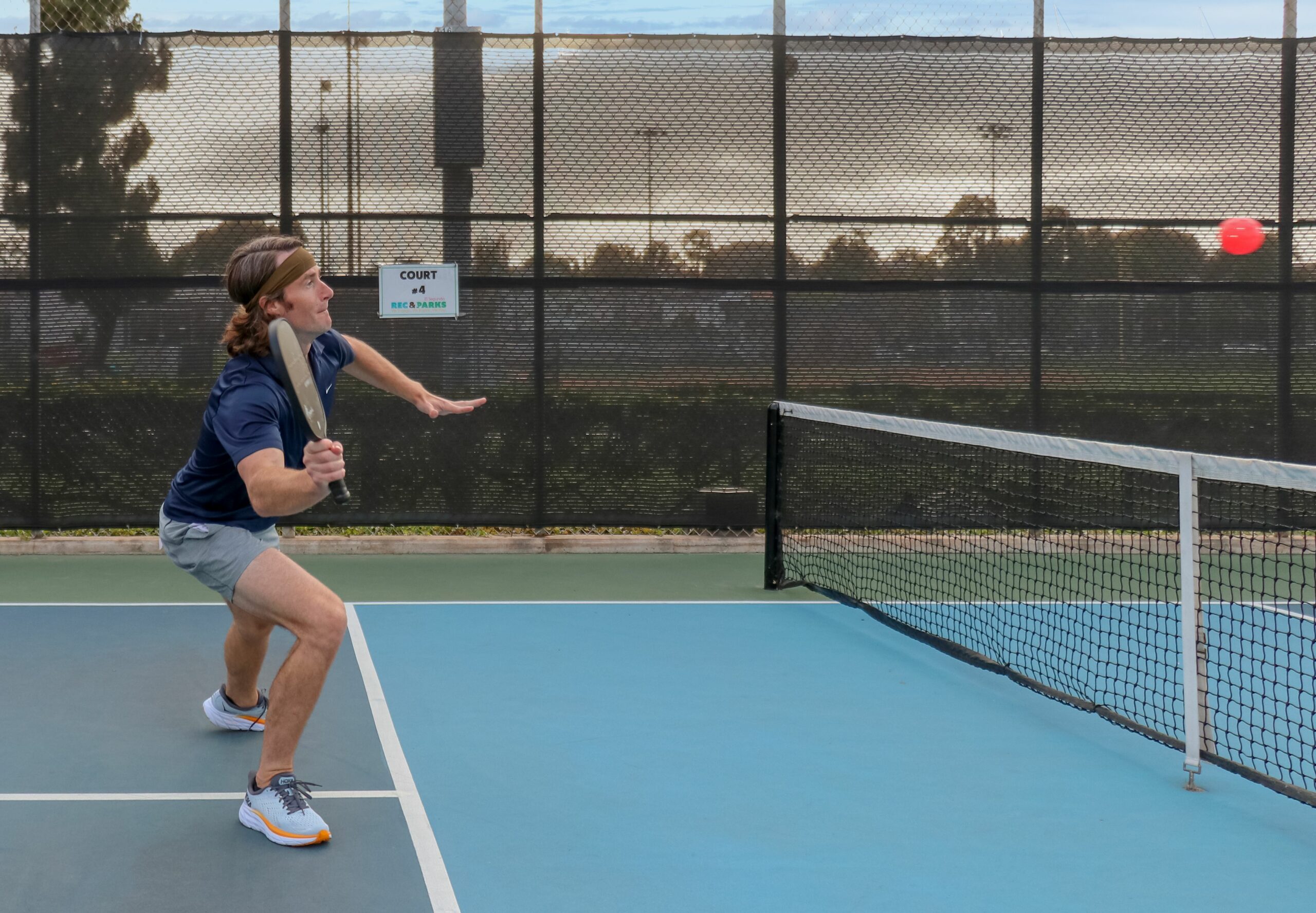
Control the Kitchen Line
The kitchen line is comparable to the frontline in a battlefield – controlling it is paramount to dictating the rally. Here’s why:
- Dominance: Controlling the kitchen line allows you to dictate the pace and rhythm of the game.
- Aggression: It enables aggressive plays which can put your opponent under constant pressure.
To control the kitchen line effectively:
- Stay Low: Maintain a low center of gravity for better balance and quicker reactions.
- Be Agile: Agility is your ally. Quick lateral movements are essential.
- Consistency: Consistent dinking and volleying keep the pressure on your opponent.
Real World Example: Consider Ben Johns’ playstyle. He is a maestro at controlling the kitchen line with his agile footwork and consistent shots.
The Dinking Game in Singles
Dinking in singles matches can be a subtle art of finesse and patience. Here’s how to weave it into your game:
- Create Angles: Use dinks to create sharp angles and pull your opponent out of position.
- Set Up Winners: Employ dinks to set up winning drives or volleys.
Techniques for effective dinking:
- Soft Touch: Keep the ball low and ensure a soft touch to prevent easy attacks.
- Vary Spins: Vary spin and pace to keep your opponent guessing.
Real World Example: Simone Jardim frequently uses dinking to her advantage, creating winning opportunities through patience and precision.
The Singles Poach
Poaching isn’t only for pickleball doubles strategies; in singles, strategic movement up to the net can dismantle your opponent’s game:
- Read the Play: Anticipate your opponent’s shots and poach accordingly.
- Quick Reflexes: Exceptional reflexes are required to seize the opportunity.
Tips for successful poaching:
- Stay Alert: Always be on your toes.
- Cover Angles: Be ready to cover both sides of the court quickly.
Real World Example: Tyson McGuffin’s game demonstrates successful poaching, often catching his opponents off guard and seizing control of the rally.
The Baseline: Power and Precision for Singles
Mastering the baseline shots is equally critical in singles play. It combines power, precision, and a tactical approach to control your game.
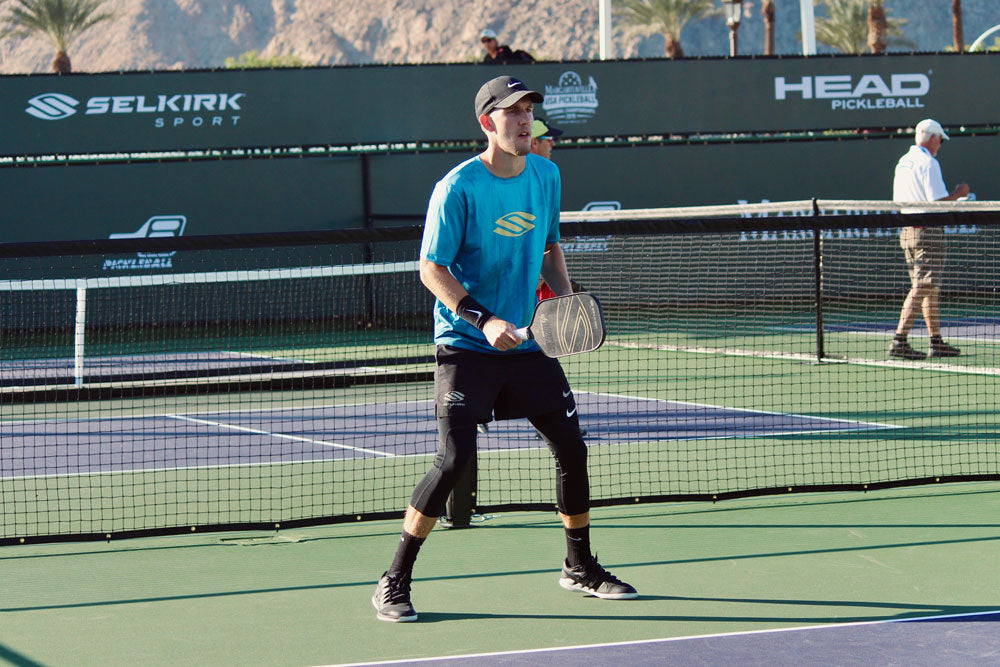
Return of Serve Strategy
Returning serve in singles must be approached strategically to create scoring opportunities. Here’s how to refine your return strategy:
- Focus on Placement: Rather than sheer power, focus on the placement of your return.
- Read the Spin: Understanding the spin on the serve can change the course of your return.
Techniques for returning serve:
- Stay Balanced: Maintain good posture and balance to execute the shot.
- Early Preparation: Prepare early to gauge spin and pace better.
Expert Insight: Kyle Yates emphasizes the importance of reading the serve and being ready to execute a controlled, well-placed return.
Deep Shots and Baseline Control
Deep shots are your main arsenal in pushing opponents backward, giving you control over the court:
- Depth Over Power: Prioritize depth. A deep shot can keep your opponent on the defensive.
- Consistency: Aim for consistency to keep your opponent guessing and under pressure.
Techniques for deep baseline shots:
- Follow Through: Ensure proper follow-through for power and accuracy.
- Mix It Up: Alternate between deep drives and drop shots to unsettle your opponent.
Professional Tips: Anna Leigh Waters excels in using deep shots to maintain the upper hand, constantly putting her opponents on the defensive.
Lobbing in Singles Matches
Lobbing is an underutilized yet highly effective pickleball strategy in singles play. Use it both defensively and offensively:
- Defensive Lobs: Get out of tight spots and reset the rally.
- Offensive Lobs: Surprise your opponent and create scoring opportunities.
Types of lobs:
- Topspin Lob: Adds control while keeping the ball deep.
- Backspin Lob: Slows the ball down, making it difficult for the opponent to attack.
Real World Example: Christine McGrath’s game showcases adept usage of lobs to turn defense into offense seamlessly.
Strategic Singles Plays: Reading Your Opponent’s Movements
Reading your opponent in singles matches can give you a strategic edge. Developing this skill is akin to having a sixth sense on the court.
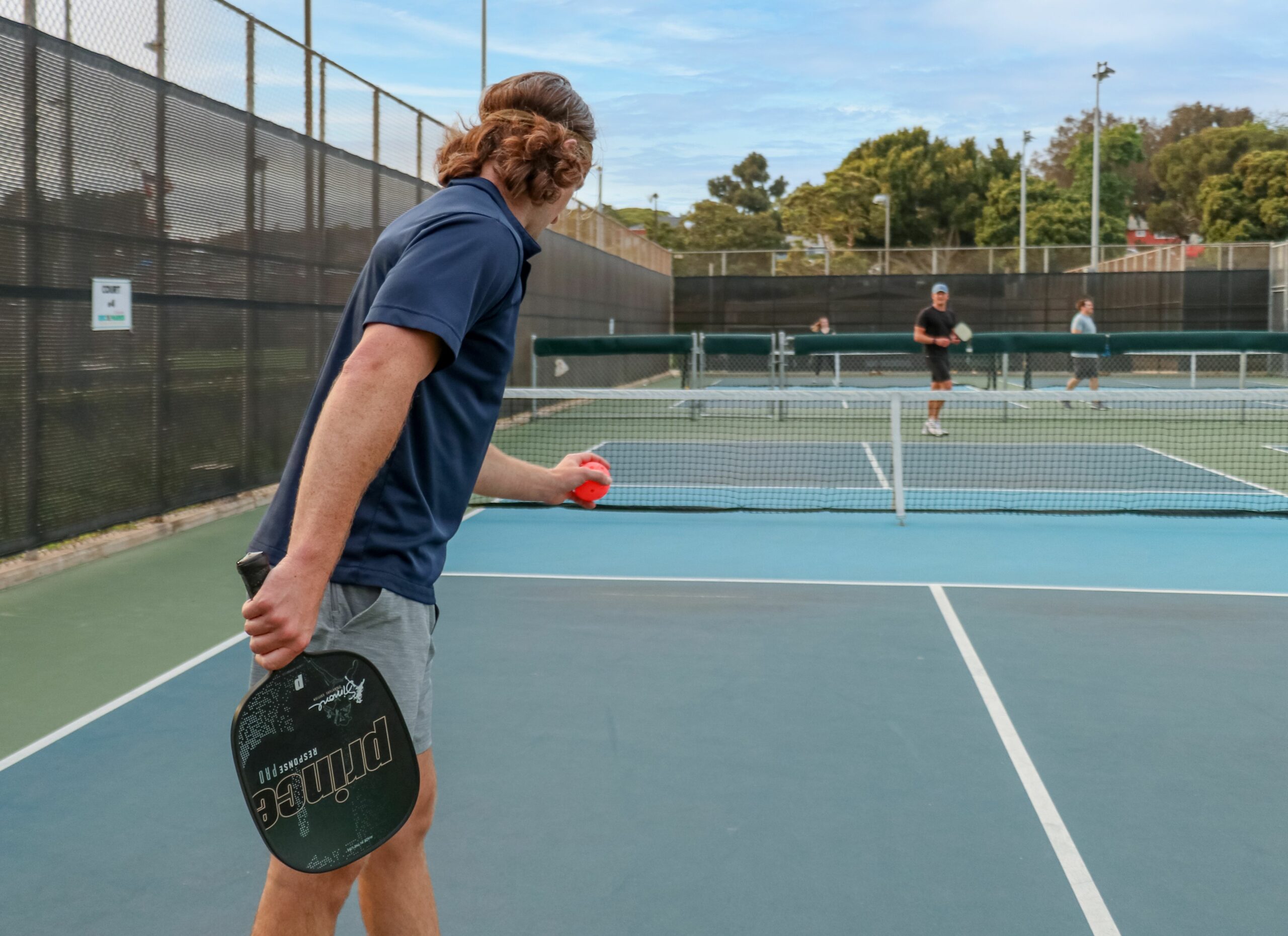
Anticipation and Prediction
Anticipating your opponent’s shots and movements can turn the tide in your favor:
- Observation: Spend the first few rallies observing your opponent’s tendencies.
- Pattern Recognition: Notice shot patterns and predict their next move.
Tips for improving anticipation:
- Stay Engaged: Always stay engaged in the game, mentally and physically.
- Quick Judgment: Make quick judgments based on your observations.
Expert Insight: Anticipation is a key quality in players like Riley Newman, who can almost ‘see the future’ of their opponent’s plays.
Exploiting Your Opponent’s Weaknesses
Exploiting weaknesses can be your main game plan against a tough opponent:
- Identify Weak Areas: Pay attention to weaker strokes or less favored sides.
- Consistent Targeting: Consistently target identified weak areas to force errors.
Strategies to exploit weaknesses:
- Mix Up Shots: Use varying spins and shot placements.
- Stay Relentless: Continuously target weak areas without becoming predictable.
Professional Tips: Leigh Waters is known for her ability to exploit opponents’ weaknesses methodically, ensuring dominance in matches.
Adapting to Your Opponent’s Style
A flexible approach can neutralize your opponent’s strengths and capitalize on their weaknesses:
- Assess Play Style: Quickly assess whether they are aggressive, defensive, or balanced.
- Adjust Tactics: Adapt your style to either counter or exploit their style.
Techniques for adaptation:
- Versatility: Be versatile in your playing style.
- Strategic Shifts: Don’t hesitate to shift strategies mid-game.
Real World Example: Zane Navratil adapts his game fluidly, often switching between offensive and defensive modes to outmaneuver opponents.
Mental Toughness and Focus in Singles
Mental toughness and focus can be the deciding factors in tight singles matches. Here’s how to build and maintain them.
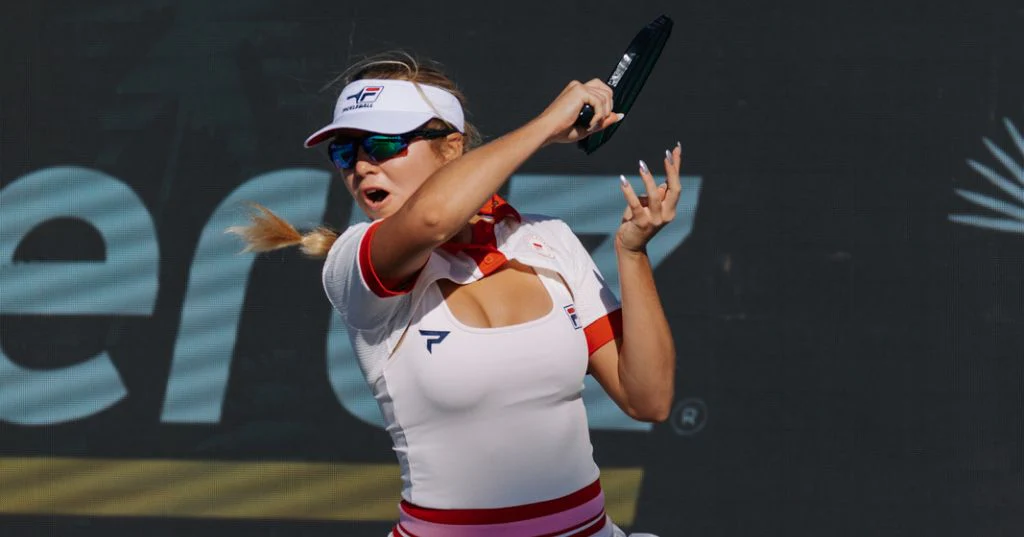
Maintaining Focus
Staying focused throughout the match is critical:
- Mindfulness: Practice mindfulness techniques to stay in the moment.
- Rituals: Establish pre-point rituals to reset and maintain focus.
Tips for maintaining focus:
- Breathe: Regularly controlled breathing helps in maintaining calm and focus.
- Short-term Goals: Focus on winning each point rather than the entire game.
Real World Example: Catherine Parenteau’s ability to maintain laser-like focus even when under pressure is admirable.
Positive Mindset
A positive mindset can be your most powerful weapon on the court:
- Self-belief: Cultivate a strong belief in your abilities.
- Positive Self-talk: Use affirmations and positive self-talk to keep your morale high.
Strategies for a positive mindset:
- Visualization: Visualize success and positive outcomes.
- Bounce Back: Recover quickly from mistakes with positive attitude.
Professional Insight: Lucy Kovalova often highlights the importance of maintaining a positive attitude, even when you’re not winning.
Overcoming Pressure
Handling pressure successfully can turn a critical point into a winning moment:
- Stay Calm: Practice deep-breathing techniques to stay calm.
- Focus on Process: Concentrate on the process, not just the outcome.
Techniques for managing pressure:
- Routine: Develop a routine to handle high-pressure points.
- Positive Reinforcement: Reward yourself mentally for staying composed.
Expert Tips: Collin Johns exemplifies the ability to perform under high pressure, maintaining calm and delivering clutch performances.
FAQs
What are the most effective kitchen strategies for singles play?
Controlling the kitchen line is crucial as it allows you to dictate the pace and force your opponent into making mistakes. Effective dinking, quick lateral movements, and maintaining a low posture are key strategies.
How can I use dinking to my advantage in singles matches?
Dinking creates angles and opportunities by pulling your opponent out of position. Use a soft touch and vary spins to keep your opponent on their toes.
When should I poach in a singles pickleball match?
Poaching should be used when you anticipate a weak return from your opponent. It requires quick reflexes and readiness to cover the court efficiently.
How can I improve my return of serve in singles?
Focus on the placement of your return rather than power. Read the spin on the serve and maintain a balanced posture to execute an accurate return.
What are the keys to maintaining focus and mental toughness in singles play?
Practice mindfulness, establish pre-point rituals, and use positive self-talk to maintain focus. Stay calm under pressure with deep-breathing techniques and focus on the process over the outcome.
Conclusion
Recap of essential pickleball singles strategies and their importance. Understanding and mastering these strategies can significantly elevate your solo game. Study these tactics, practice consistently, and experiment with different approaches. By integrating these strategies into your game, you’ll become a formidable pickleball singles player ready to dominate the court solo.
Ready to take your singles skills to the next level? Begin implementing these strategies today, and watch as you start to command attention with your advanced play on the pickleball court!
